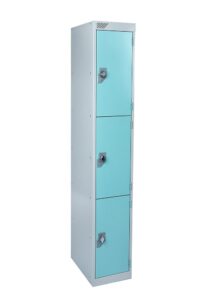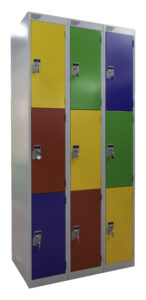Introduction
You could come across the term locker nesting, especially when you have a quote for metal lockers that mentions ‘Nest of 1, Nest of 2 or Nest of 3.’ When we talk about Nest 1, Nest 2 and Nest 3, we’re diving into a more specialized aspect of locker configuration when lockers are manufactured and installed, for any sector such as schools, leisure centres, offices and many more. In this blog, we will explain what locker nesting means.
The solution lies in efficiency, both in terms of material use and cost-effectiveness. The approach to nesting lockers reduces the quantity of materials that are required for fabrication. At Helmsman we provide our customers with a reduced overall price when the metal lockers are nested making it more cost effective.
The ‘nest’ represents the number of lockers that are connected side by side.
Nesting:
Nest of 1 usually refers to the single locker manufactured not attached to other lockers which allows the lockers to be installed in different designated areas.
A nest of 2 refers to when two lockers are manufactured together, the lockers are connected. When lockers are nested, it has fewer visible ridges and hinges between them, which creates a more aesthetic environment.
A nest of 3 indicates when three lockers are constructed together.
Grouping lockers together can save total manufacturing and installation costs. Shared walls and structural supports may need less materials to be used. This not only reduces the cost of materials, but it also reduces labour costs but also minimises disruption to the facility during installation.
Overall, locker nesting, either in 1, 2, or 3, is an efficient method when manufacturing lockers as there are fewer materials used and it is more cost-effective for the customers and the manufacturer. When lockers are nested, it provides a more seamless appearance.



